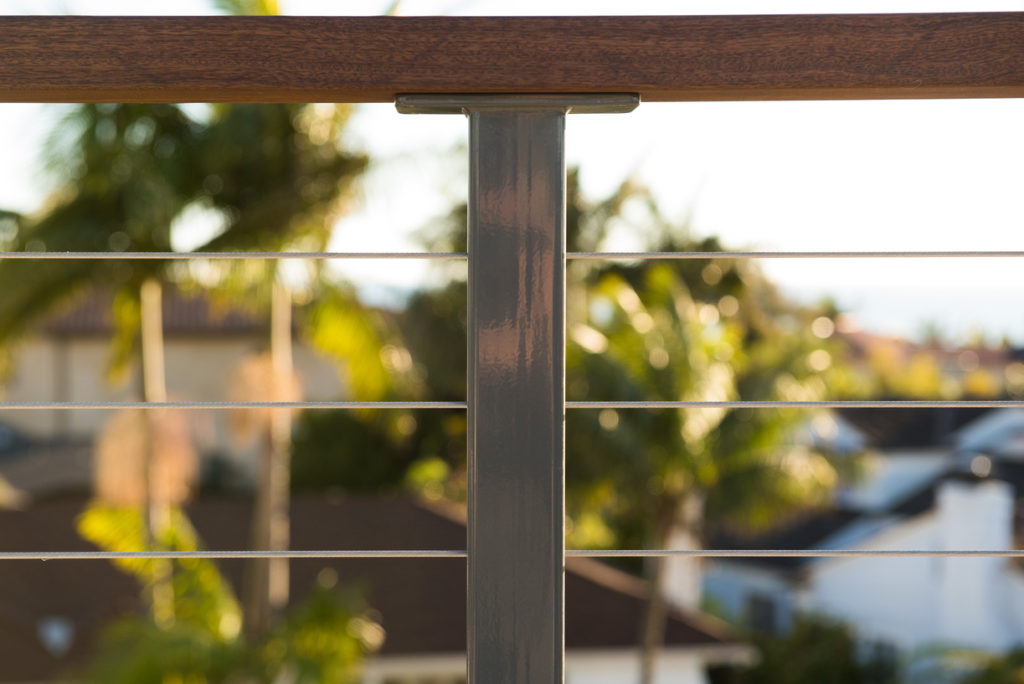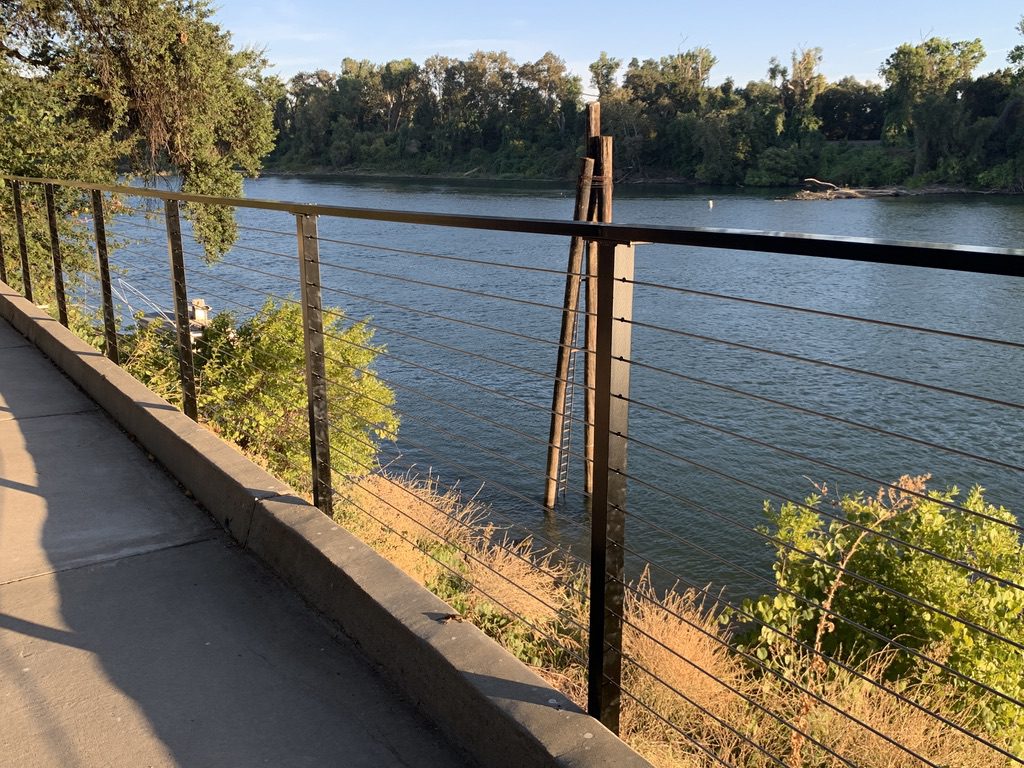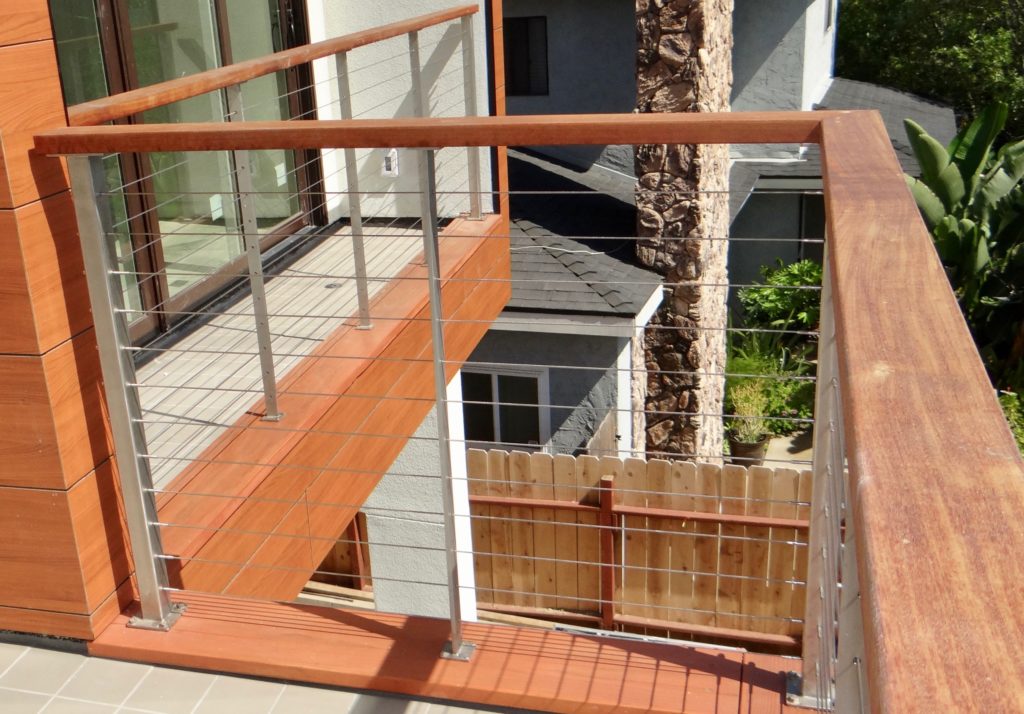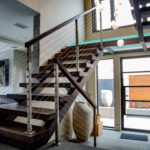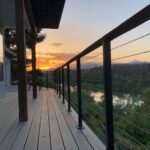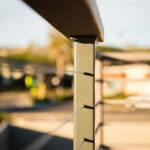There are several types of interior and exterior railings and railing post types available in today’s marketplace. Reviewing the different mounting types, recommended spacing, materials, colors and applications can be daunting at times. In this post we aim to clarify some of these details and offer some common terminology regarding the most popular railing post types. Most of the reference material is geared towards stainless steel cable and glass railing systems as those make up the majority of our sales and installations.
Structural Railing Posts
Depending on the type of railing system there may be a single type or many type of posts used to support the infill and top rail. Structural posts refer to those designed to sustain lateral and possibly tension loads within a railing system. An “end post” or a “corner post” within a cable railing system refer to structural railing posts. In comparison, a “spreader post” would not be considered a structural railing post as its purpose is not primarily structural and mainly aesthetic.
A common spacing recommendation for structural railing posts is between 4 and 6 feet on center spacing. Cable railings require tighter spacing for structural posts than picket railings due to tension loads and spread. The most common recommendation for cable railing systems is 4′ on center, while glass panels might be 5′ on center, and various picket or rod infill systems can push to the 6′ on center spacing. These are generic guidelines as systems and municipalities vary. Installers should follow recommendations and current codes.
Glass Boot and/or Base Shoe Support Systems
Although not technically a railing post, base shoes are becoming more and more commonly used for glass railing systems. A “base shoe” or “boot” is secured to the deck surface and acts as a structural clamp and support for heavy duty tempered glass panels. Structurally, a boot system is one of the only secure ways to support glass panels without the use of railing posts. Base shoes are engineered for structural use and support, requiring grout or a special locking system to secure the panels and support system. Recent updates have called out the use of laminated glass more and more often for “no top rail” glass systems. A base shoe mount is a proven way to safely achieve this type of install.
Railing posts of different types and sizes can also be used in lieu of base shoe for installing glass panels. Typically glass clips (small clamping mechanism) are attached to structural railing posts in order to secure glass panels for this type of installation. Additionally, there are full framed glass systems which utilize channel and/or full framed glass railing with top and bottom railings and structural posts every 4-5′.
Intermediate Posts, Spreader Posts, and Slim Line Railing Posts
Intermediate posts like the one photographed above are also called “spreaders” or “line” posts. This type of railing post is often utilized to increase a viewing window without the larger profile of a structural post. As photographed the structural posts are 2″ square while the spreader post is a mere 3/8″ wide profile. The intermediate (spreader) post provides some rigidity and prevents the stainless steel cables from spreading, without the need for the heavy wall or width of a 2″-4″ post. When dealing with cable railings, glass, and other low visibility systems; spread is key to opening the view. When utilizing spreader posts between structural posts, installers can achieve clear windows of 6-7 feet without fear of code compliance or stability issues.
Additional Notes on Railing Posts and Terminology
Consumers should note that railings and fencing are very different when it comes to spans and spacing. There are many photographs found online that illustrate posts, pegs, clips, and all different kinds of spacing that may or may not satisfy code requirements for a safety railing. Just because photos exist, does not mean it will satisfy an inspection.
Windbreaks and fencing may not require the same safety measures as a second story deck. Railings with and without top railing members will often have different rules and code requirements. Our company (San Diego Cable Railings) has been furnishing railing kits to homeowners and builders nationwide since 2009. We furnish a variety of railing posts for cable, glass, rod, and horizontal panel systems. Our welded connections and high grade stainless posts have been engineered to satisfy loading requirements, and even our spreader posts provide unmatched strength and elegance for your home.
If you have questions about any of our railing post types or would like to obtain pricing for a railing system, give us a call or visit the quote request form today.
